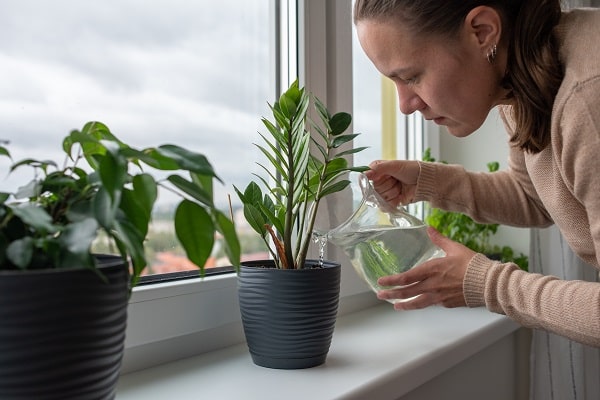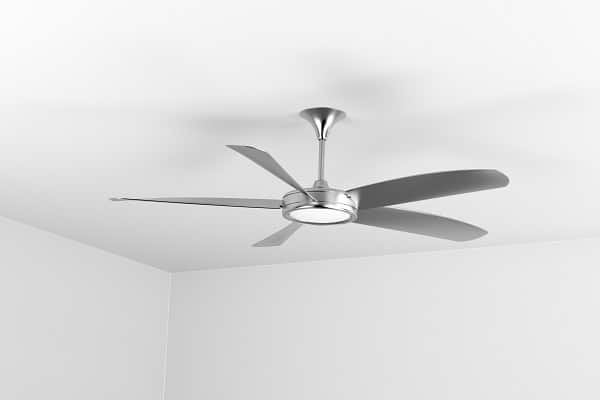People love to plant houseplants, and everyone knows that it is suitable for indoor air. But have you heard about potting soil beginning to grow mold? Do you know that mold in houseplant soil is not safe? No one will want mold in their home and house plants because it can bring particular health concerns. Mold develops in a dark and damp environment. The most common areas where you can find mold in your homes are the bathroom and basement. House plant soil also provides an appropriate condition for the growth of mold. If you find mold in houseplant soil, it is better to take immediate action to prevent health risks and damage to your plant. You don’t need to remove that plant from your house, but you can certainly do some measures to prevent and remove mold in house plant soils. Molds are white fuzzy growth that appears at the base of your plant overnight. Molds can appear in your plants in containers and also on leaves. It occurs on soil for many reasons; one should understand the cause of the problem and then know how to get rid of them. First, everyone must realize that just like humans have natural microorganisms in their bodies and skin, plants also have natural microorganisms around them. And many of those microorganisms are essential for their proper growth and health. But if people do not take appropriate care of their plants, then the balance of nature can get disturbed, and you may notice mold emerging on the surface of the potting soil. And this is the time to take immediate action.
Contents
Poor drainage

Poor water drainage can result in high moisture. Moisture is one of the suitable conditions for mold and other fungal diseases to thrive. Incorrect size of pots, dense soil, and lack of drainage holes can be the reasons for poor water drainage. Before purchasing a container or pot, one must measure plants to avoid the chances of roots getting rotten by a large amount of water. One must also buy a pot with drainage holes that allow water to run through the soil and out of the pots; otherwise, it will retain the moisture, and mold and fungus can develop.
Overwatering

Putting extra water in a potted plant can grow fungus and rotten roots. Indoor plants do not require more water as compared to outdoor ones. However, as home plants are not exposed to direct sunlight, they retain moisture for longer, so there are chances for mold growth if you put extra water in it.
Contaminated soil

Sometimes, potting soil can give rise to mold issues. It is better to check the soil before planting.
Lack Of Air Circulation

Indoor plants do not get proper air, especially during winters. This lack of adequate air circulation can retain moisture and give rise to the growth of molds.
Prevention Of Mold In Houseplant Soil

-
- Avoid contaminated soil and use healthy and sterile ones for your new plants. And while also changing the ground of old plants. Commercial potting soil is best to use, which contains numerous nutrients.
- Remember that molds thrive in moist environments. Overwatering can create a favorable condition for them to develop. One should not overwater their home plants.
- You must remove dead leaves from the soil and regularly wipe off the dirt from the leaves because mold and other fungal infections feed on decomposing matters. Therefore dead leaves can encourage the growth of mold on the soil.
- Provide proper ventilation and adequate light to your house plants. Sunlight is essential for plants’ growth and also to repel mold. Ventilation will allow the soil to dry and decrease the risk of mold growth.
Removal Of Mold In Houseplant Soil

-
- If there is a large amount of mold, it is better to re-pot that plant; otherwise, locate the mold and use a spoon to scrape off that part of the soil and discard it. While doing this, one can wear a dust mask to protect oneself.
- To avoid the recurrence of mold, you can add an antifungal solution to the soil. For this purpose, you can choose cinnamon or baking soda and sprinkle it on the soil. Don’t sprinkle too much of the solution, and remember to distribute evenly. It will prevent the recurrence of the mold.
- As soon as you find mold on the plant, remove it immediately. And to remove mold from the leaves, take a paper towel, dampen it, and wipe off the mold gently. After each wipe, use a fresh paper towel and dispose of them to avoid spreading mold spores. If you still see mold on any leaves, it is better to cut them off.
Conclusion
If you keep your indoor plant soil mold-free, they can provide you with many benefits. If you provide your plant with the right combination of air, soil, sunlight, and water, your house plant will grow adequately without new molds. If you take proper care of the plants and be aware of the harmful situations, you can prevent and eliminate mold growths on plant soil.


